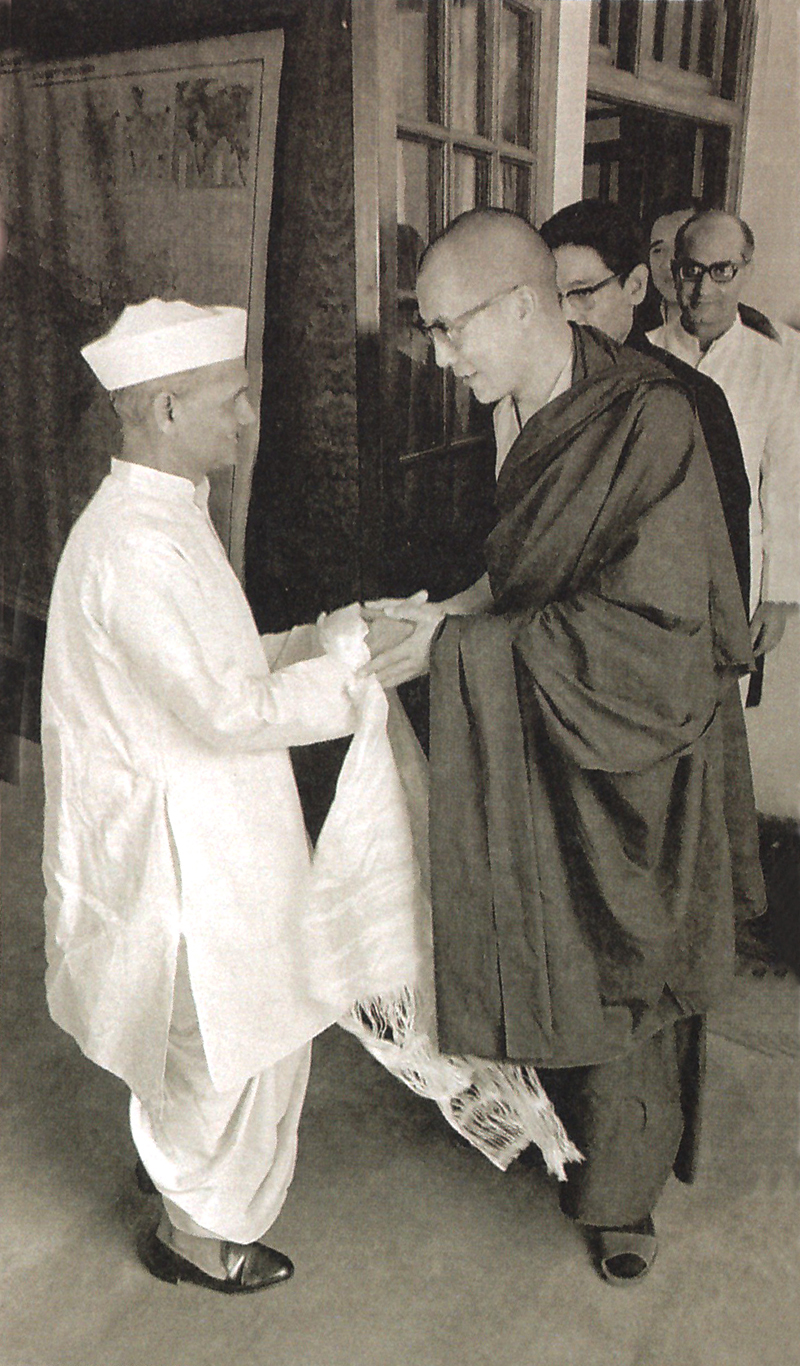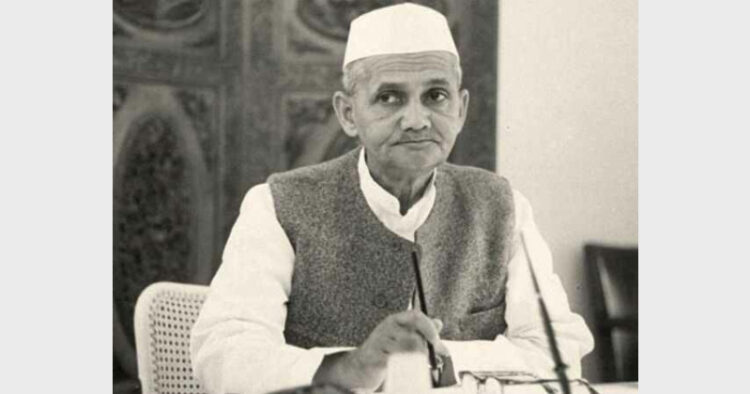“There are many theories about the mysterious death of former Prime Minister of Bharat, Lal Bhadur Shastri. The recent biography of HH the Dalai Lama indicates that there may be a Chinese angle to the Shastri Ji’s death, which is still an unresolved puzzle”

New information, coming out of the latest biography of Dalai Lama, the exiled ruler and supreme spiritual leader of Tibet, indicates that the mysterious death of Indian Prime Minister Lal Bahadur Shastri at Tashkent in 1966 could also be related to some serious international developments and forces at play that has remained out of the popular public narrative. The book reveals that the Shastri government was going to recognise the Dalai Lama’s Dharamshala establishment as the ‘Tibetan Government in Exile’ soon after his return from Tashkent. But the entire process dropped through following the sudden and mysterious death of the Indian Prime Minister at Tashkent.
As against Pandit Jawahar Lal Nehru’s openly pro-China inclinations during the 1959 and 1961 voting in the General Assembly of United Nations on the issue of Tibet, the author points out that the Indian government under Mr. Shastri’s stewardship strongly supported and voted in favour of the same resolution on Tibet when it was presented before the UN in 1965. According to the author Mr. Shastri was in regular touch with the Dalai Lamaand used to write ‘long letters to His Holiness’ who too was a great admirer of Mr. Shastri.
=====
On an early day of January 1966, the Dalai Lama received a message from W.D. Shakabpa, his representative in New Delhi, which carried the news which he has been longing to hear since the day he had entered India in 1959 after his 17-day long daring escape from the guns of Chinese Army in Tibet. Shakabpa informed the Dalai Lama that “the Indian government was prepared to recognize the Tibetan government in exile and that he would receive a definite answer once the Prime Minister (LalBahadurShastri) returned from Tashkent.” These details come from the latest biography of the Dalai Lama, written by his closest associate Tenzin GeycheTethong, who worked with him for over 44 years in different capacities including 30 years as his Private Secretary. The book, titled “Dalai Lama, An Illustrated Biography” has been published by Roli Books and carries some rare and historic photographs too.
Shakabpa, was heading the ‘Bureau of His Holiness the Dalai Lama’ in New Delhi which functions as the de-facto ‘Embassy of Tibet’ in India. His main assignment in New Delhi was to function as the hot link between the government of India and the ‘Central Tibetan Administration’ (CTA) in Dharamshala. But unfortunately for Tibet and Dalai Lama, the claws of death snatched away Mr. Shastri before he could even start his journey back home from the Soviet city of Tashkent on 11th January 1966. Just a few hours before he died, he had signed the historic India-Pakistan truce which has come to be known as the ‘Tashkent Agreement’.
As per the limited information made available to the people of India by the successive governments in New Delhi since that fateful day, PM Shastri suffered a ‘heart attack’ minutes after he took his dinner and was preparing to sleep in his personal guest room and died before any meaningful medical support could reach him. He had signed the ‘Tashkent Agreement’ with his Pakistani counterpart Field Marshal Ayub Khan who was at that time the dictator President of Pakistan and the architect of military attack on India. Interestingly, despite serious imbalance of military hardware against India due to direct support of the USA in favour of Pakistan, Indian defence forces had turned the table on Pakistan and had snatched many strategic army posts along Punjab and Jammu & Kashmir borders.
This agreement was initiated under international pressure from both world power blocks, represented by the USA and USSR as well as the United Nations. The ‘Agreement’ practically forced Mr. Shastri to give up all the military gains made by the Indian defence forces at a very high price of lives and war machinery. As per the narratives, successively built up in India over the years by various Congress governments, Mr. Shastri died because of his worries about the public backlash on his return to India. The public fears about the fakeness of such narratives have failed to die for many reasons. One reason is that no postmortem was carried on the body of Mr. Shastri. Another is that no appeal for a thorough enquiry into the circumstances and factors which lead to his death was attended to by the political or administrative bosses of India.
The new information regarding the Shastri government’s plans to give official recognition to the Dalai Lama’s ‘government in exile’ gives an altogether new dimension to this issue and raises serious questions about the role of China in the sudden and mysterious death of PM Shastri. It is a well-known fact that until the India-China war of 1962, Pakistan, a close ally, rather a satellite of the US block in the cold war against USSR and communism, had perpetually stood on the wrong side of China. But soon after its war with India and worsening relations between India and China, Beijing found a new ally in Pakistan with a large enough anti-India meeting ground to develop this ‘friendship’ further.

This was the time when China under the leadership of Mao was trying to reduce the influence of Comintern (Communist International), controlled by the Soviet Union. The Sino-Soviet relations were already taking the downward trend, while the Communist China was recalibrating its relations with the USA. It was perfectly suitable for the Beijing to sabotage the Tashkent Agreement, as it would kill many birds in one arrow. One single act of eliminating Shashtri Ji could stop India from recognising the Tibetan Government in Exile; and at the same time, it could create distrust between India and USSR. If the claim of Shastri Ji’s intention after returning from Tashkent is true, then China was the biggest beneficiary of his death.
For Pakistan too which has been under military dictatorship of General Ayub Khan since 1958 and the General’s government thrived on fears and popular hatred for India, China proved to be a suitable ally. So much so that the Pakistani government happily ceded the Shaksgam region of Pakistan Occupied Jammu & Kashmir (POJK) to China to help the latter for fortifying its borders with India and to construct the strategic Karakoram Highway through this region.
As a result of China’s attack on India in 1962 by using the occupied Tibetan territory as its launch pad, the ‘Hindi-CheeniBhai-Bhai’ spirit fast gave way to anti-China feelings in India. Even Pandit Nehru, who has been blindly supporting China on the issue of Tibetan occupation, lost his faith in Beijing.Until then it was Nehru who had stood in the way of America and her allies when they brought resolutions in favour of Tibet and against China in the UN in 1959 and 1961. But following China’s attack on an unprepared India and India’s military humiliation, the anti-China and pro-Tibet sentiments started gaining ground in India. So much so that in December 1965 when a resolution on Tibet was placed and discussed in the UN General Assembly, India’s representative Rafiq Zakaria not only blasted China with a high voltage speech but also voted in favour of the resolution. China taken note of the meeting between the Dalai Lama and PM Shastri too which took place in Calcutta in October 1966 and the special protection the New Delhi government provided to the Dalai Lama during the India-Pakistan war during and after the September war.
From a supportive and an obedient Nehru who would concede on almost every point before the Beijing leaders, Shastri was a complete contrast. He was emerging as a new challenge to the Chinese designs and dreams. The changing face of India and its leadership has been already on show before the Chinese and the worldwhen a resolute and determined Shastri led his poorly equipped defence forces to give a bleeding nose to General Ayub Khan and his armyand air force which were armed up to their teeth with the most modern American weapons. Shastri surely represented a qualitative as well as a quantitative change in New Delhi’s policy towards China, especially on Tibet.
It was therefore not surprising that Beijing leaders could also know what Dalai Lama’s representative could see coming up soon in New Delhi. However, the unfortunate part of the Shastri story is that the Indian establishment failed miserably in protecting its brilliant national leader. Still worse fact is that neither the Indian leadership nor the bureaucrats in the Home Ministry or the Ministry of External Affairs could develop enough wisdom or guts to go deeper to solve the mystery even decades after the unfortunate death of their Prime Minister in a foreign land. The only explanation could be the spell of the Meera Sinha Bhattacharjea Syndrom that a sizeable section among them remained afflicted with that keeps them more worried about the sensitivities of Beijing leaders than their own national interests.














Comments